
Photos by Carolyn Lueck unless otherwise noted


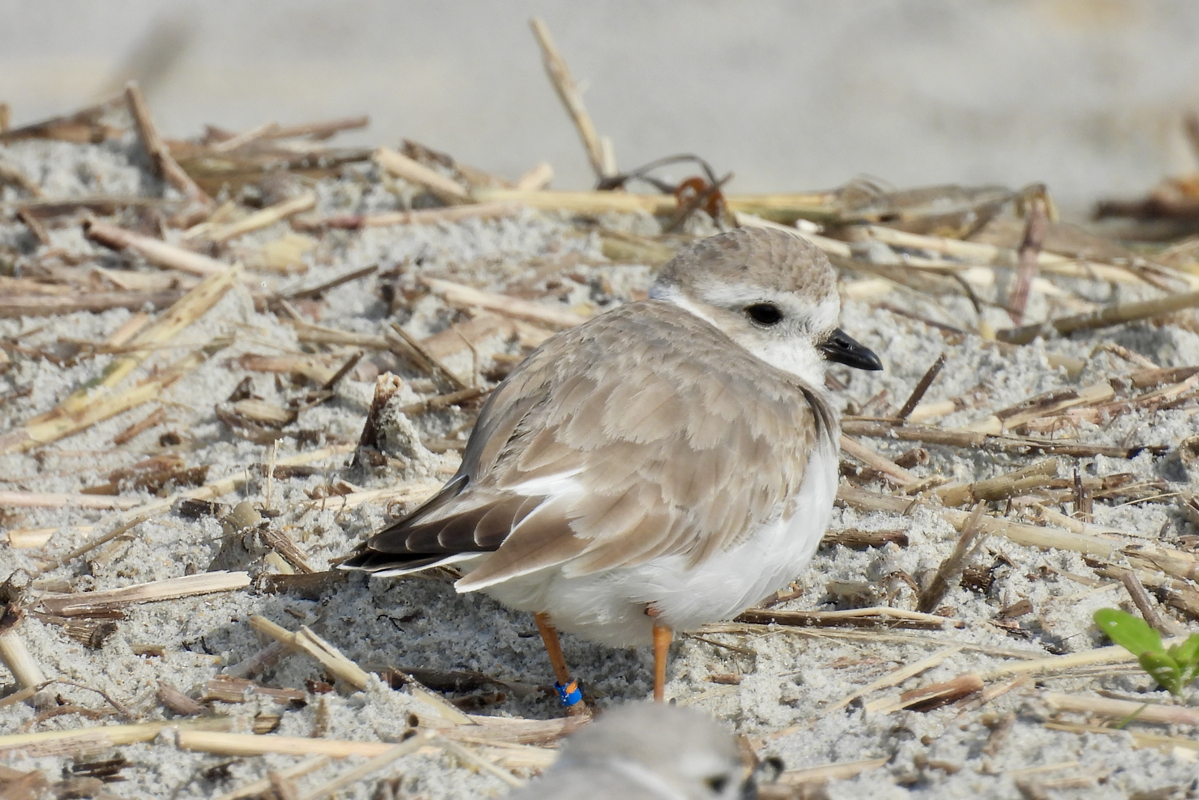

Photos by Carolyn Lueck unless otherwise noted
Piping plovers (Charadrius melodus) were never abundant in Illinois, with perhaps only thirty pairs nesting in the once expansive Waukegan Dunes and another twenty scattered throughout the sand dunes of Lake Calumet. It is estimated that the historical population of these beach-loving birds in the Great Lakes region overall was likely in the range of just 500 to 800 pairs, due mainly to the limited shoreline habitat available.
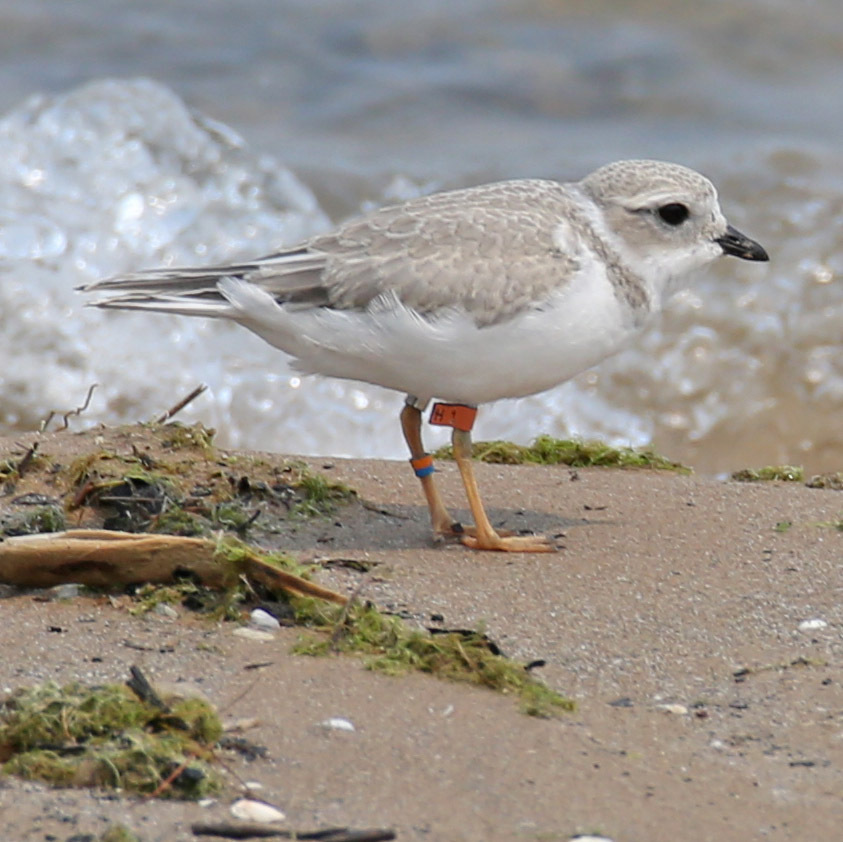
However, with conversion of the dunes to industrial development, by 1955 the Illinois population had disappeared. Over the ensuing decades, due mainly to habitat loss, nest disturbance and predation, the entire Great Lakes piping plover population had dwindled to only about two dozen birds. In an effort to save them, the Great Lakes population was placed on the federal endangered species list in 1986. By 1990, Michigan was the lone Great Lakes state that still supported a population.
With diligent conservation efforts led by the Great Lakes Piping Plover Conservation Team the piping plover population has slowly grown. In 2017, for the first time in decades, piping plovers nested on the shores of all five of the Great Lakes. In Illinois, the now famous Monty and Rose first tried to nest in Waukegan in 2018.
That year, they built their nest in a gravel parking lot at Waukegan Beach. Obviously, a parking lot is not an ideal place for a nest. Despite the installation of a large wire cage around the nest and the addition of road barriers, ropes, and signs to deter access, unauthorized traffic within the protected area forced the collection of the four eggs under careful guidance from the US Fish and Wildlife Service. Captive rearing occurred in Michigan, and while three eggs hatched, only a single chick named Goggly survived to fledging.
In 2019 the pair opted for a different location in Illinois. It doesn’t get much more urban than Chicago’s Montrose Beach, but it was there that the pair tried their luck. Their first nest at Montrose was inundated by a significant storm surge, and none of the four salvaged eggs hatched. Although the storm event left the nest under a foot of water, the pair did not give up.
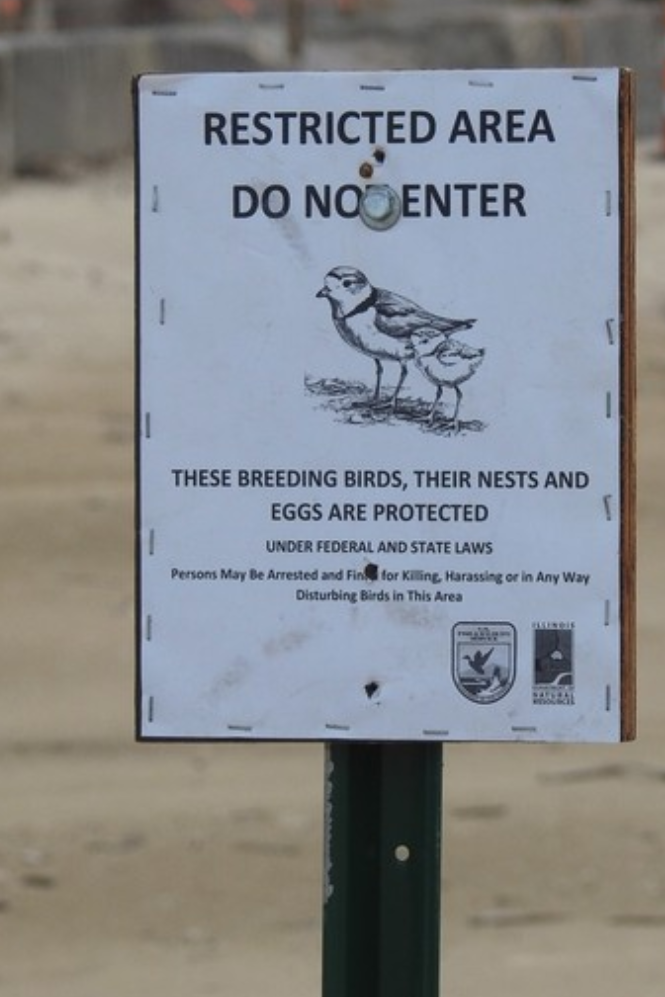
The phrase, “third time’s the charm” applies to their second 2019 nesting attempt on higher ground at Montrose Beach. They successfully fledged two chicks and the rest of their story is history.
Today the Great Lakes piping plover population remains on the federal and Illinois endangered species lists, but collaborative efforts by federal and state wildlife agencies, cities, park districts, NGOs and thousands of volunteers are helping to put the plovers back on the map. These small shorebirds still face many challenges, but there is hope. They are slowly gaining a foothold with help from captive-rearing programs, the use of nest exclosures, habitat restoration, and extensive monitoring efforts on both their nesting and wintering grounds. As of 2024, there were 81 documented nesting pairs in the Great Lakes states.
I have been working with piping plovers for 20 years, both on the nesting grounds and here on the Gulf coast. Having birds that overcome so much and return each winter really gives me hope and makes me feel like all our collective efforts in this field are working. I have marveled at the resilience of piping plovers. Monitoring banded individuals has shown me that they are survivors and seeing them return year after year has given me so much hope. — Audrey Albrecht, Sanibel Captiva Conservation Foundation Shorebird Biologist
A few of the Great Lakes piping plovers spend 3-4 months in Illinois during the breeding season. The rest of the year these birds live along the coasts of North Carolina, Florida, Texas or Louisiana.
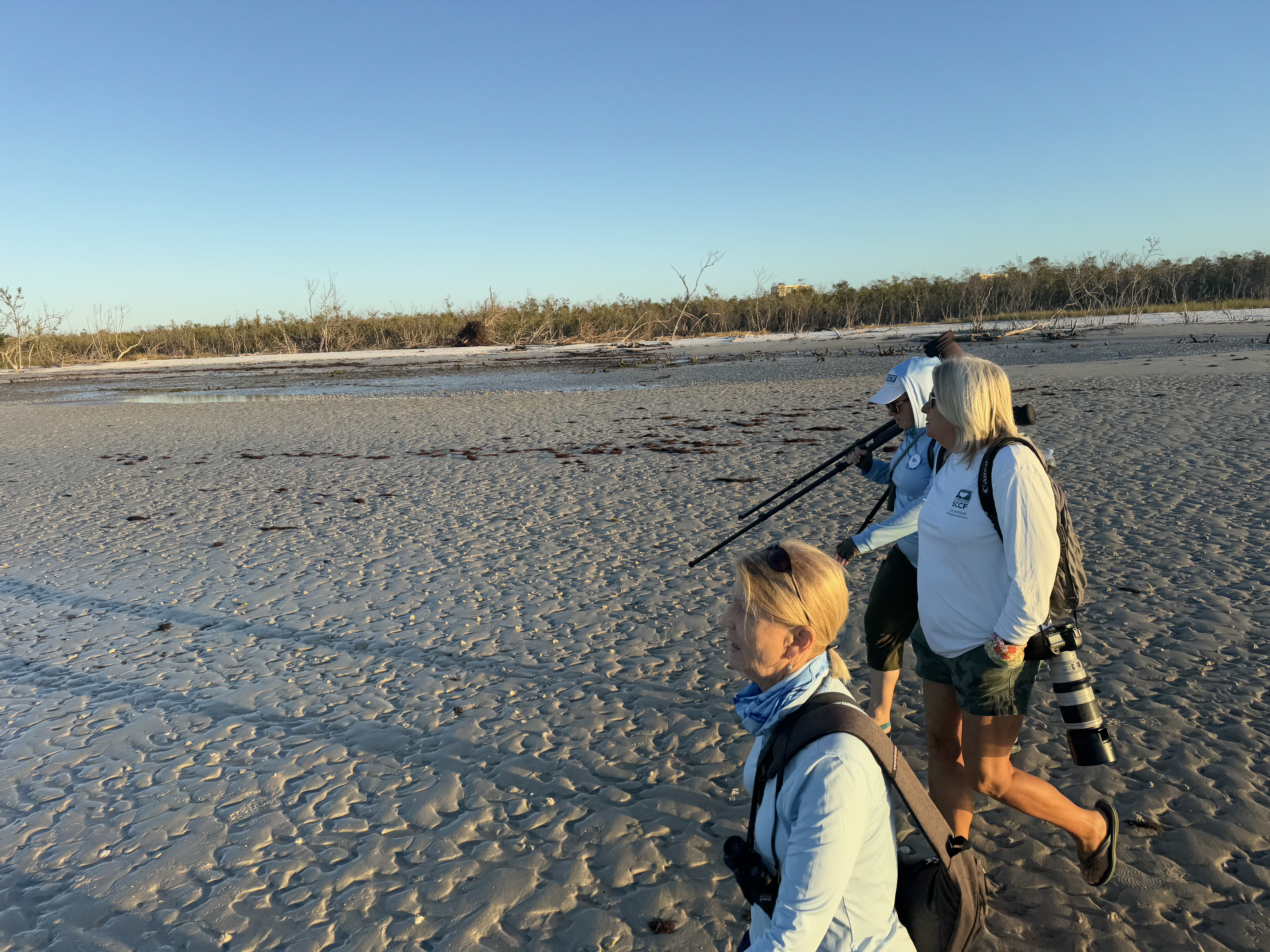
Those working to protect the plovers throughout their range are aided by the plover’s own behavior. Both on their nesting and wintering grounds, piping plovers show strong site fidelity. The birds that survive the spring migration tend to come back to the same beaches to pair up and get to the vital business of nesting and brood rearing. Having insight on where the birds are likely to return gives biologists and volunteers in Illinois a leg up in preparing for their summer nest protection efforts and in monitoring the birds.
After returning to their southern wintering grounds in late summer, the plovers usually forage alone or in small flocks spread out across the mudflats. Albrecht noted that during their monitoring in Florida, individual plovers can predictably be found in the same locations on the flats each year. She shared, “At a very high tide they are huddled in small groups on “Plover Island” which is what staff at the park call the area where the Wilson’s and snowy plovers nest in the summer. In the winter, groups of black-bellied plover, Wilson’s plover, snowy plover, semipalmated plover, and piping plover all rest together in the dry sand at high tide.”
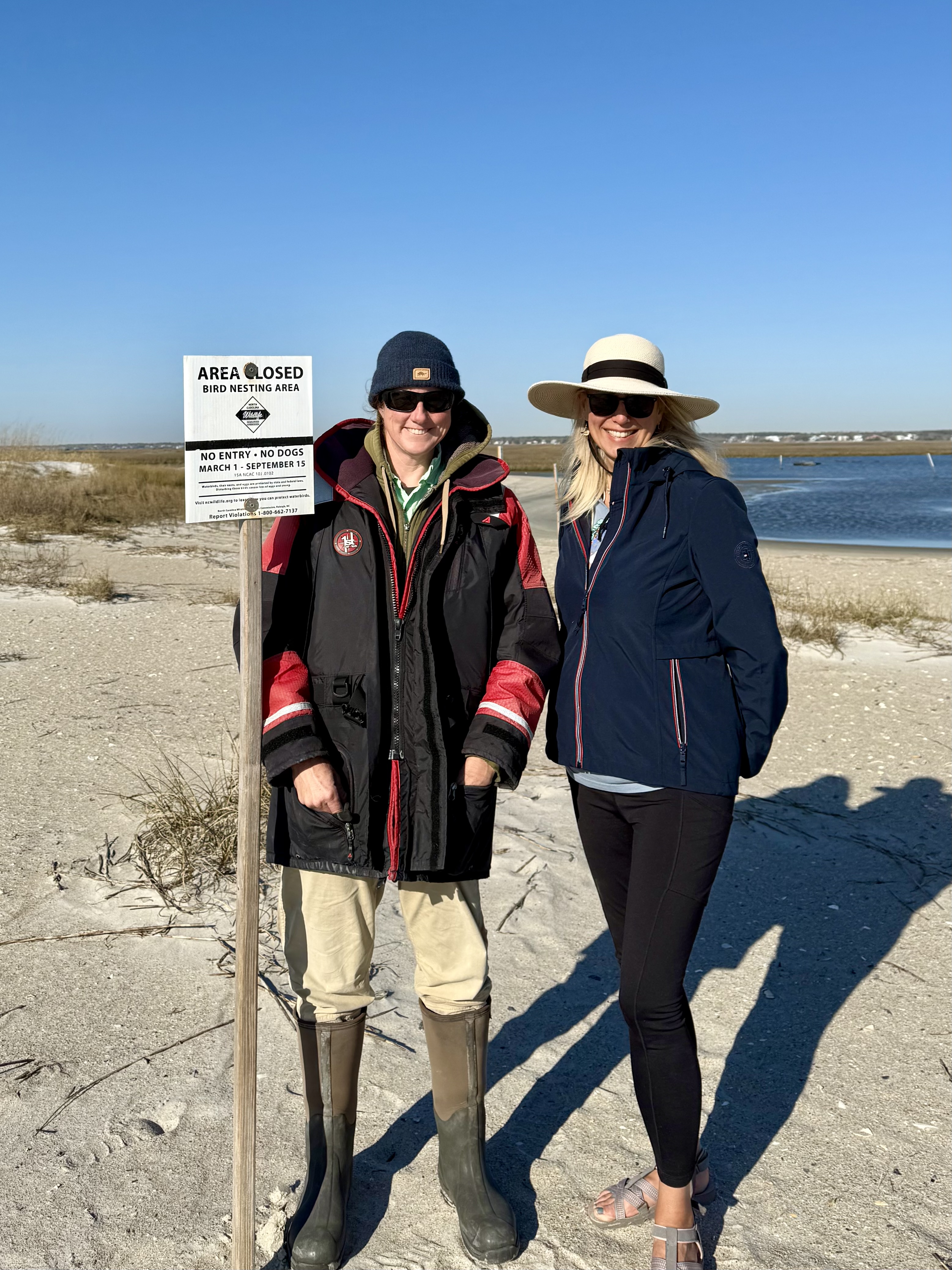
I heard a similar tale from Lindsay Addison, North Carolina Audubon Coastal Biologist, about the piping plovers that winter there. Protecting habitat not only benefits the plovers, but also a host of other shorebirds. Addison sometimes spots piping plovers while surveying for shorebirds such as the least tern, Wilson’s plover, American oystercatcher and willet.
While their site fidelity makes it somewhat easier to monitor the birds throughout the year, the location of the wintering grounds of several of the Illinois-nesting piping plovers remains a mystery. And site fidelity has its drawbacks. As Addison pointed out, “Site fidelity means that if that patch of habitat is degraded or destroyed, the plover must find a new site or perish.”
The incredible value of having piping plover monitors during both the nesting season and at wintering sites has been clearly demonstrated. Their observations have enabled us to fill in knowledge gaps encompassing a wide range of unknowns, including captive-rearing survival and migration, return rates, mortality events, and the importance of protecting undeveloped shoreline, to name a few. –Brad Semel, Illinois Department of Natural Resources Regional Recovery Specialist
With such low numbers, the survival of each piping plover is critical to the long-term survival of the Great Lakes population—a fact that weighs on wildlife biologists and piping plover fans, as they are very familiar with the myriad of threats that these birds face.
During the nesting season the piping plovers must deal with storms that batter the shores of Lake Michigan and the other Great Lakes. These storms can flood nests and injure or kill chicks and adult birds. Climate change also plays a role in changing lake levels, which impacts the extent exposed, sandy beaches are available for foraging, nesting, and hiding from predators. During the non-breeding season, they often experience deadly hurricanes along the Gulf coast or the beaches of the southern Atlantic.
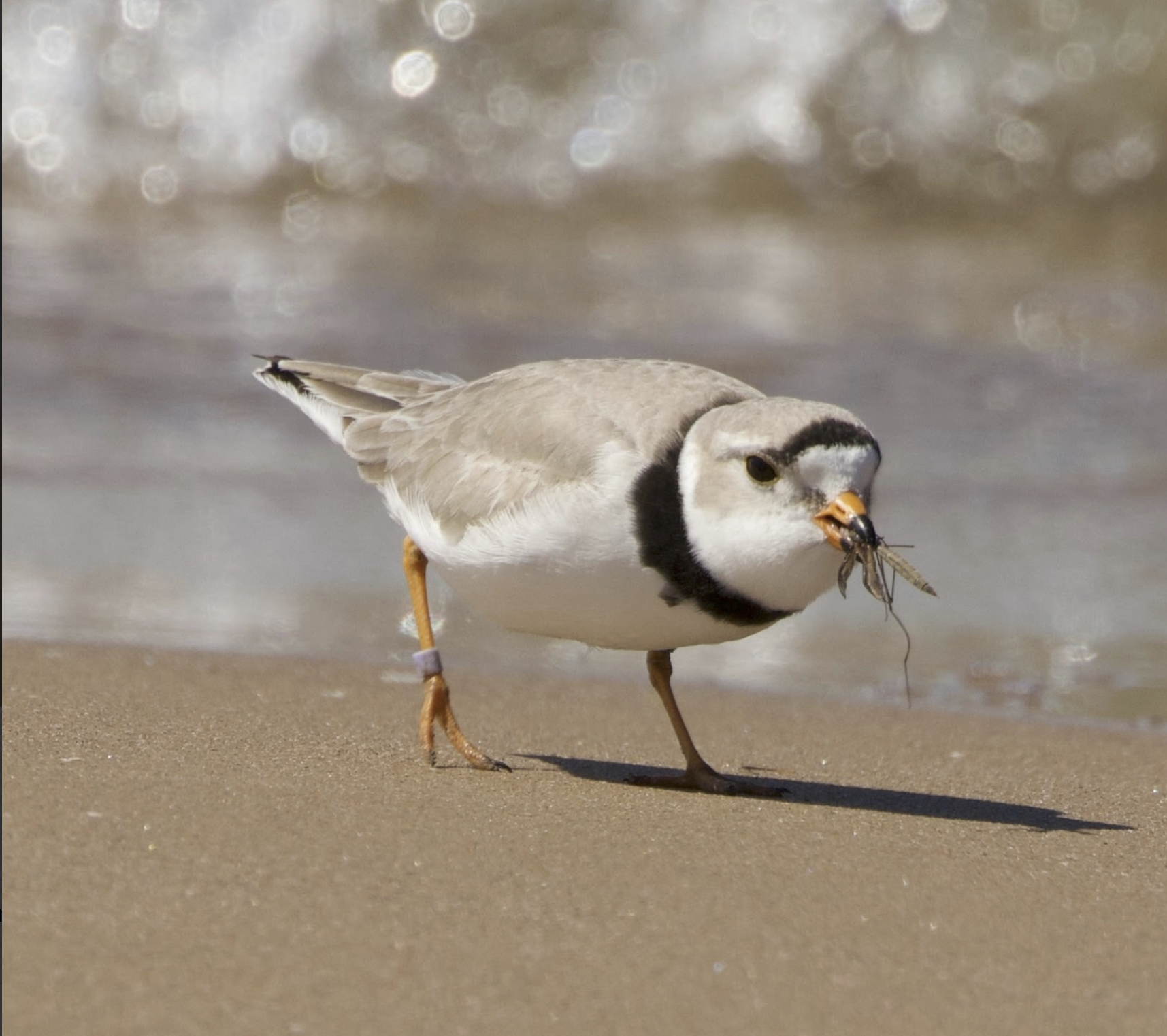
Water quality is intrinsically tied to the feeding habits of piping plovers. These birds do a kind of foot-tapping dance while feeding. As Addison explained to me, they are visual predators who hunt on wet sand—their foot jiggle display disturbs prey, making them easier to find. In Illinois they focus on searching the shoreline for insects and freshwater worms, while on their wintering grounds they forage on coastal inlets and intertidal sandbars seeking invertebrates and polykites (marine worms). Oil spills and contamination by microplastics are two of the more well-known threats to the coastal ecosystems these bird depend upon.
When both feeding and resting, piping plovers choose open, sandy, elevated areas away from trees and bushes. This allows them to watch the skies for their main avian predators which include gulls, crows, peregrine falcons and merlins. Marram grass and other coastal plants provide cover in which to hide from these avian predators, as well as from their main mammalian predators—coyotes, red foxes and raccoons.
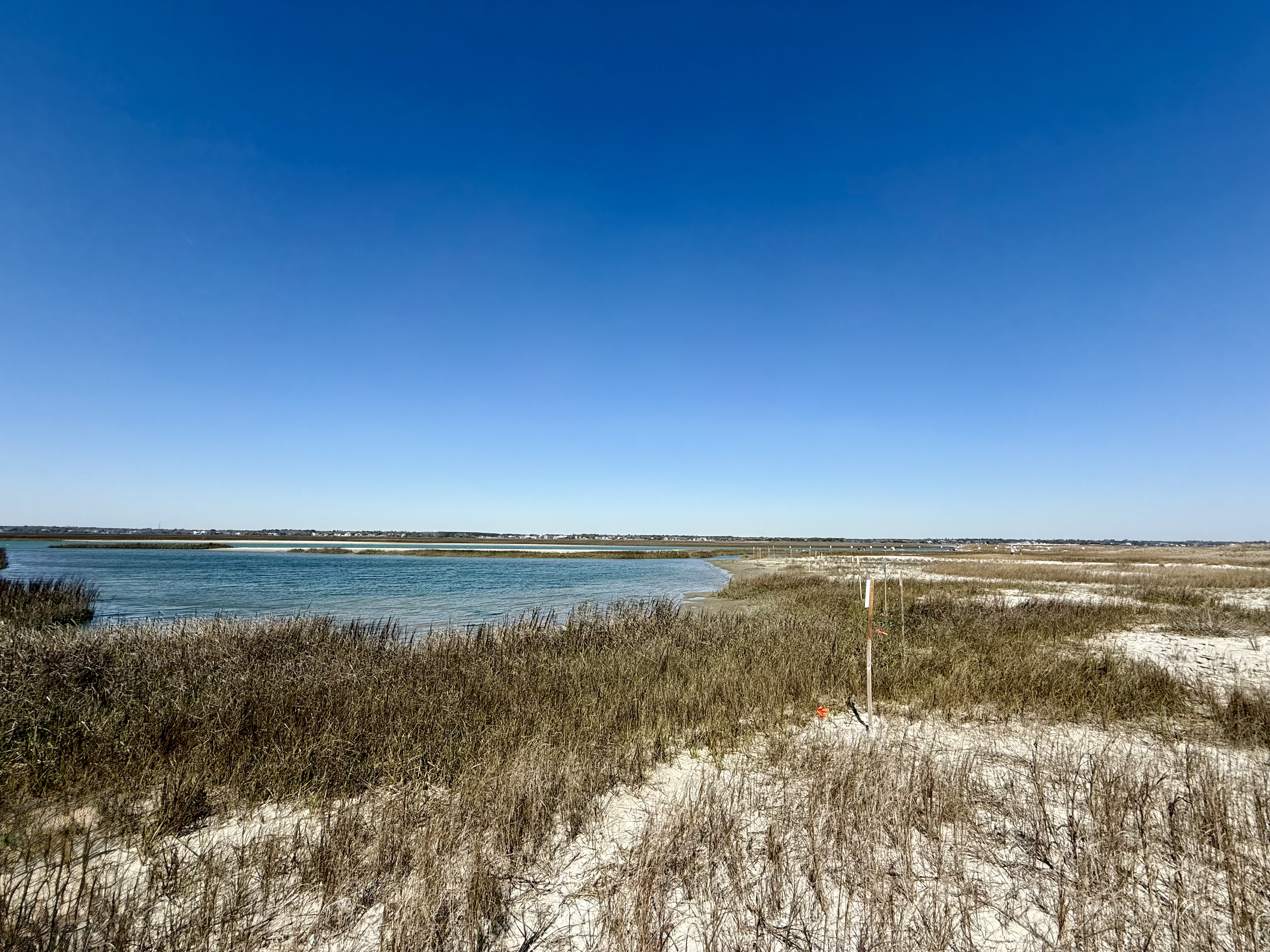
The main hindrances to putting plovers back on the map in substantial numbers are habitat loss, due primarily to shoreline development, and human disturbance. Beachfront property is considered prime real estate and is under ever-increasing pressure to be converted for homes and urban expansion. Urban sprawl, mining, and pollution have all been identified as leading threats to coastal dunes.
While in the southern states, the inlets are essential for the plovers and other shorebirds. Inlets are often targeted for development, which means dredging. This ruins the intertidal shoals, and the hardening of the inlets means that the shorebirds lose their preferred elevated, narrow spots that jut out into the ocean. Another issue caused by the dredging and beach nourishment projects is that putting large quantities of sand on the shorelines effectively buries the piper’s prey or raises the elevation of the beach so that the sand dries out and does not provide the necessary wetland habitat in which to successfully forage— making it challenging or impossible for them to feed in those areas.
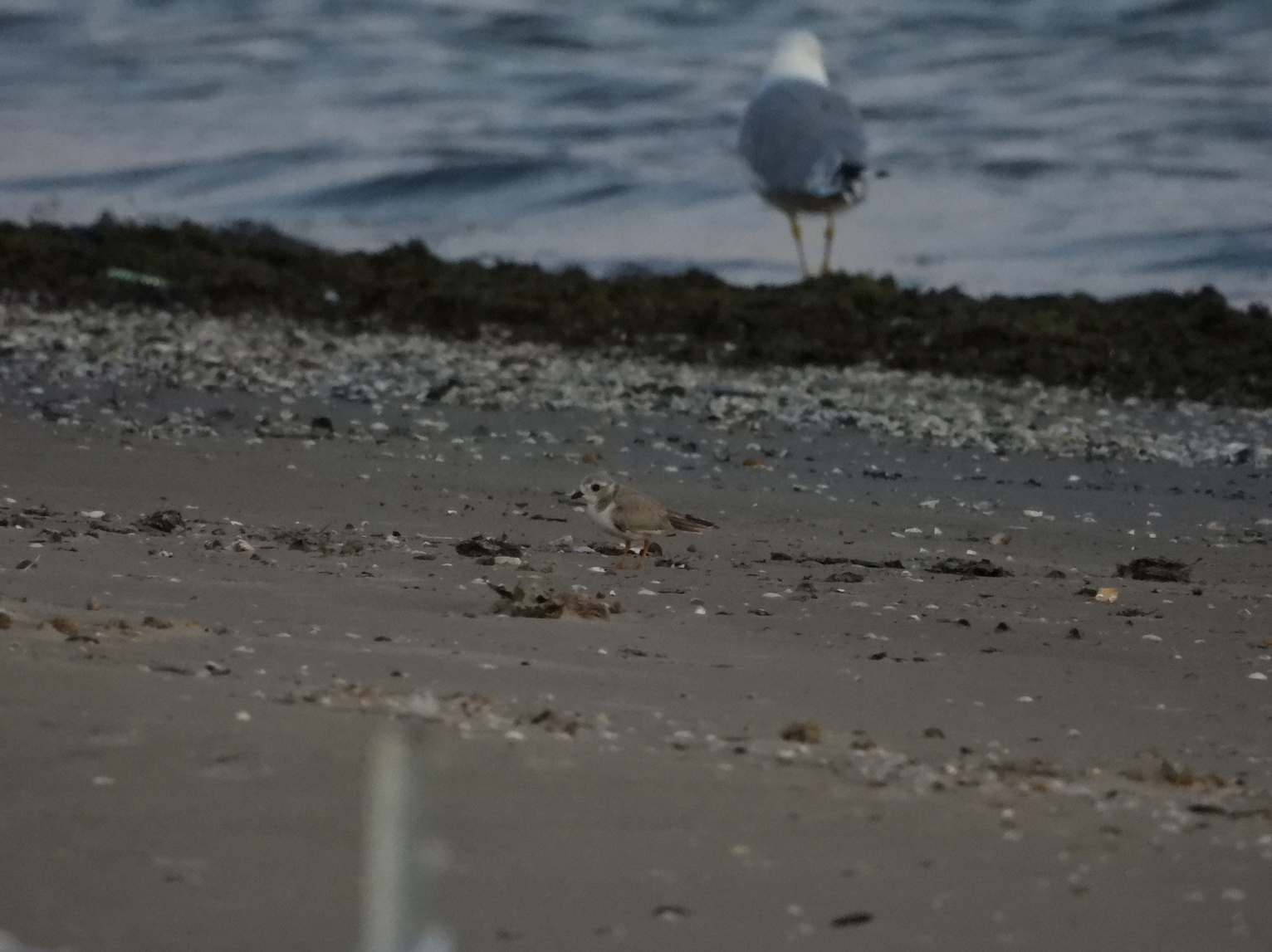
Beaches don’t just attract piping plovers—many attract large numbers of people as well. All too often, people arrive with unleashed dogs, loud music or off-road vehicles, not to mention the trash they leave behind. All of these disturbances lessen the chances of successful reproduction and can stress the adult plovers. The birds need to be able to forage and rest without frequent interruptions caused by people’s recreational activities, especially during the nesting season and before they make their spring and fall migrations. Additionally, trash that collects on the beaches often attracts more predators to the area, such as gulls and raccoons, and increases the amount of energy that plover chicks and adults must expend to avoid predation.
According to the US Fish and Wildlife Service, for the birds wintering along the Atlantic and Gulf coasts “loss of habitat to beach development and shoreline stabilization is a major concern at many sites, particularly on private lands.” Beach grooming, shoreline stabilization and nourishment, dredging and dredge spoil placement, and roads and other facilities for oil and gas development are also potential threats.
While there isn’t much that can be done to protect the birds from severe weather events, people can help protect plovers in other ways. Habitat conservation, restoration and protection are key. Additionally, when recreating, people need to be mindful of the wildlife that live there. Don’t forget to Share the Shore!
Laura Kammin is a Natural Resources Specialist with the National Great Rivers Research and Education Center. She formerly held positions at Illinois-Indiana Sea Grant, University of Illinois Extension, Prairie Rivers Network and the Illinois Natural History Survey. She received her master’s degree in wildlife ecology from the University of Illinois, Urbana-Champaign.
Submit a question for the author